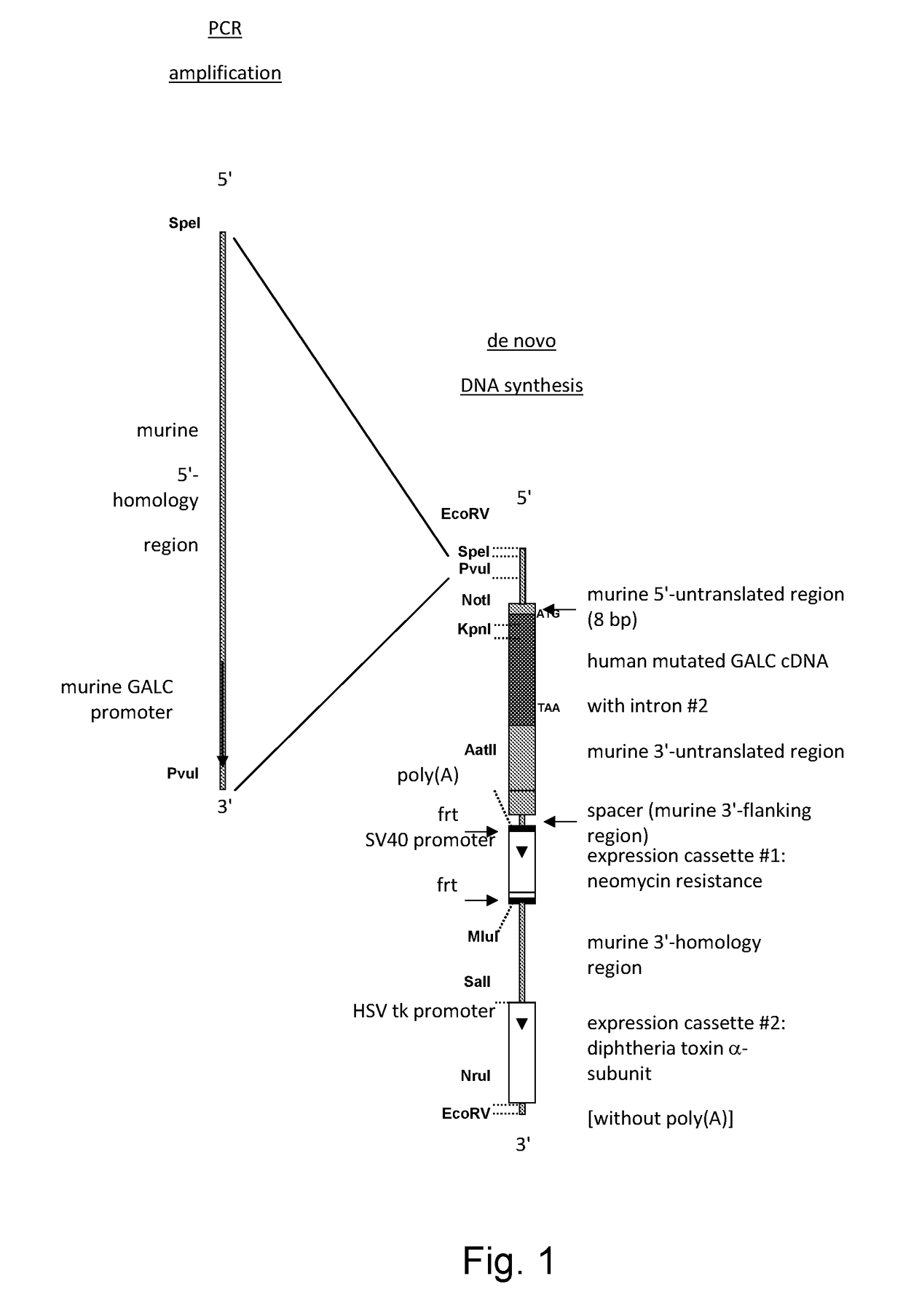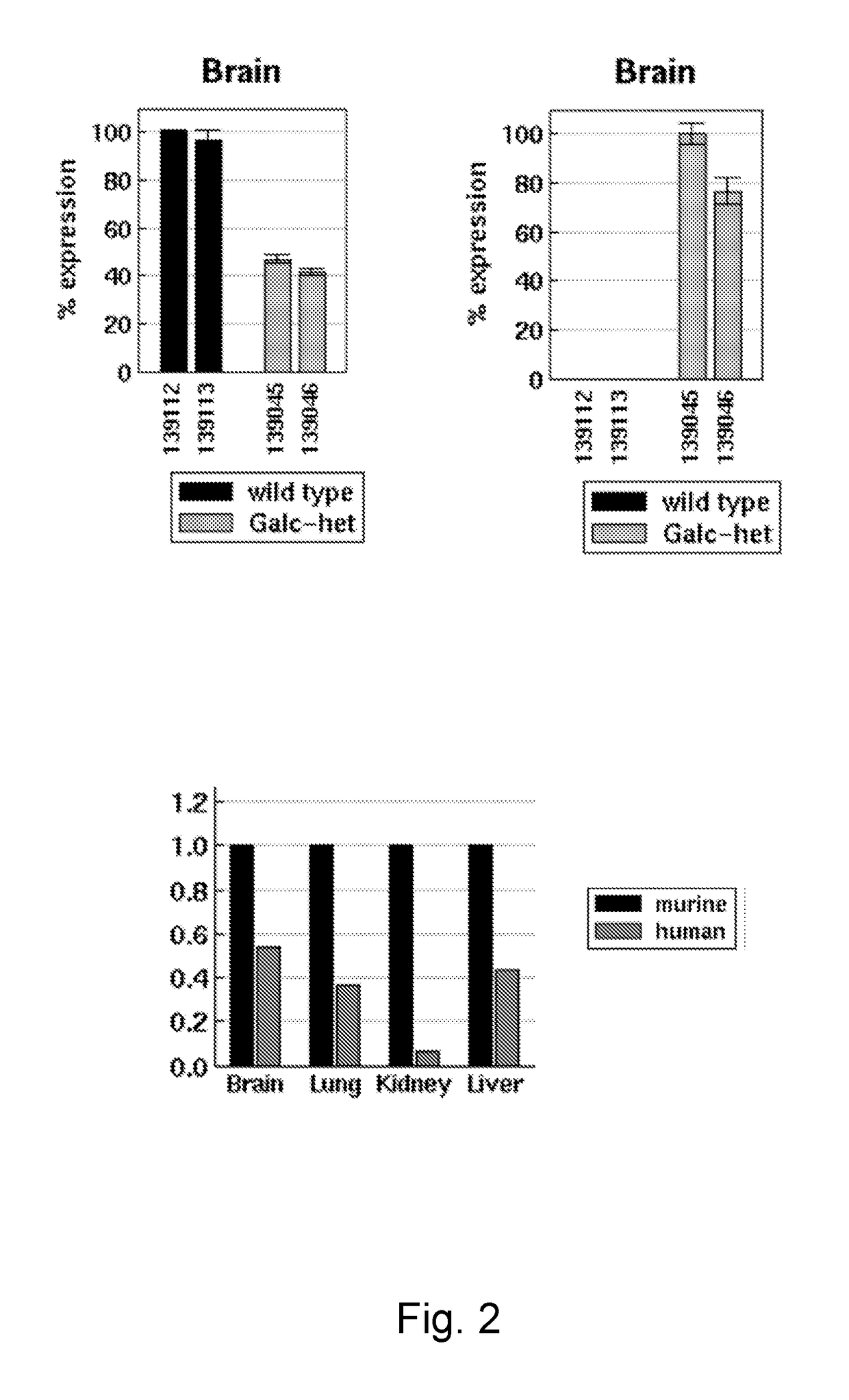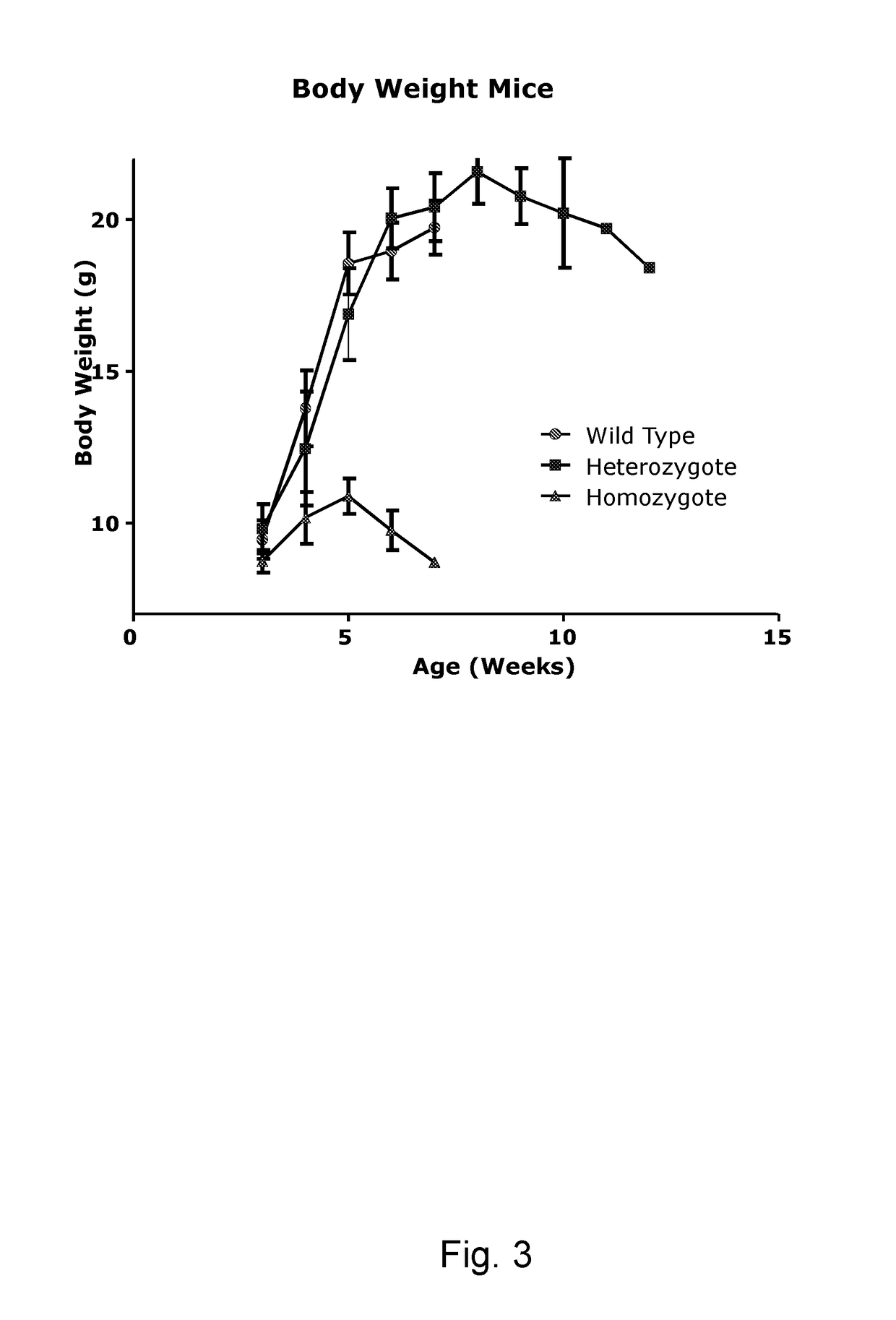Animal model of Krabbe's disease
a technology of krabbe's disease and animal model, which is applied in the field of animal model of krabbe's disease, can solve the problems of no curative treatment of gld, severe mental reduction and motor delay, and it is almost impossible to predict the effect of each individual mutation, so as to slow the progression of the disease and mild the phenotyp
- Summary
- Abstract
- Description
- Claims
- Application Information
AI Technical Summary
Benefits of technology
Problems solved by technology
Method used
Image
Examples
example 1
n of Immunotolerant Mouse Model for Krabbe Disease
Experimental Strategy and Design of the Knockin Targeting Vector
[0112]The experimental strategy involved removal of the 57 kb coding region of the GALC gene from chromosome 12 of the mouse genome and substitution with a human full length GALC cDNA harbouring the mutation c.G809A (p.G270D) and the polymorphism c.T1637C (p.I546T). The expression of the inserted mutant human GALC cDNA was to be controlled by the endogenous murine GALC promoter and poly(A) signal.
[0113]The genomic sequence upstream from the coding region, the 5′-untranslated region and the 3′-untranslated region of the murine gene was to remain untouched. The ATG start codon and TAA stop codon of the human cDNA was to be positioned exactly onto the murine ATG and TAA codon, respectively. To increase transgene expression rates the second intron of the human GALC gene (247 bp) would be incorporated into the human GALC cDNA.
[0114]To enable homologous recombination in embryo...
example 2
n of Chimeric Mice
[0121]Blastocysts were isolated from superovulated BALB / c females at dpc 3.5. For microinjection, blastocysts were placed in a drop of DMEM with 15% FCS under mineral oil. A flat tip, piezo actuated microinjection pipette with an internal diameter of 12-15 μm was used to inject 10-15 targeted C57BL / 6NTac ES cells into each blastocyst. A total of 98 blastocysts was injected with ES cells from two targeted clones. After recovery, 8 injected blastocysts were transferred to each uterine horn of 2.5 days post coitum, pseudopregnant NMRI females. The foster mice gave birth to 29 pups of which 18 were chimeras. Chimerism was determined by coat colour contribution of ES cells to the BALB / c host (black / white). Five highly chimeric male mice (>50%) were bred to C57BL / 6 females being transgenic for the Flp recombinase gene (Schaft et al., 2001). Two breeding pairs produced a total of 96 pups. Germline transmission was identified by the presence of black, strain C57BL / 6, offsp...
example 3
iological Analysis of Humanized Knock-in Mice
Parameters
[0133]The analysis of mice which are homozygous for the human mutant GALC allele hGALCG809A / T1637C can be divided into five parts: analysis of general phenotype, biochemical validation, analysis of general phenotype, evaluation of biochemical disease markers and evaluation of histological disease markers (see list below). It has to be mentioned that results of some investigations determine the details of successive analyses. If behavioural abnormalities are undetectable, for example, electrophysiological measurements of nerve conduction will be omitted. The following list therefore represents a collection of possible analyses which make sense considering that humanized knockin mice develop a mild variant of the twitcher phenotype with increased life span but overt behavioral deficits. Analyses which are obligatory to evaluate the phenotype and which will be done also in the absence of an overt phenotype are underlined. Methods a...
PUM
| Property | Measurement | Unit |
|---|---|---|
| internal diameter | aaaaa | aaaaa |
| size | aaaaa | aaaaa |
| stiffness | aaaaa | aaaaa |
Abstract
Description
Claims
Application Information
 Login to View More
Login to View More - R&D
- Intellectual Property
- Life Sciences
- Materials
- Tech Scout
- Unparalleled Data Quality
- Higher Quality Content
- 60% Fewer Hallucinations
Browse by: Latest US Patents, China's latest patents, Technical Efficacy Thesaurus, Application Domain, Technology Topic, Popular Technical Reports.
© 2025 PatSnap. All rights reserved.Legal|Privacy policy|Modern Slavery Act Transparency Statement|Sitemap|About US| Contact US: help@patsnap.com



